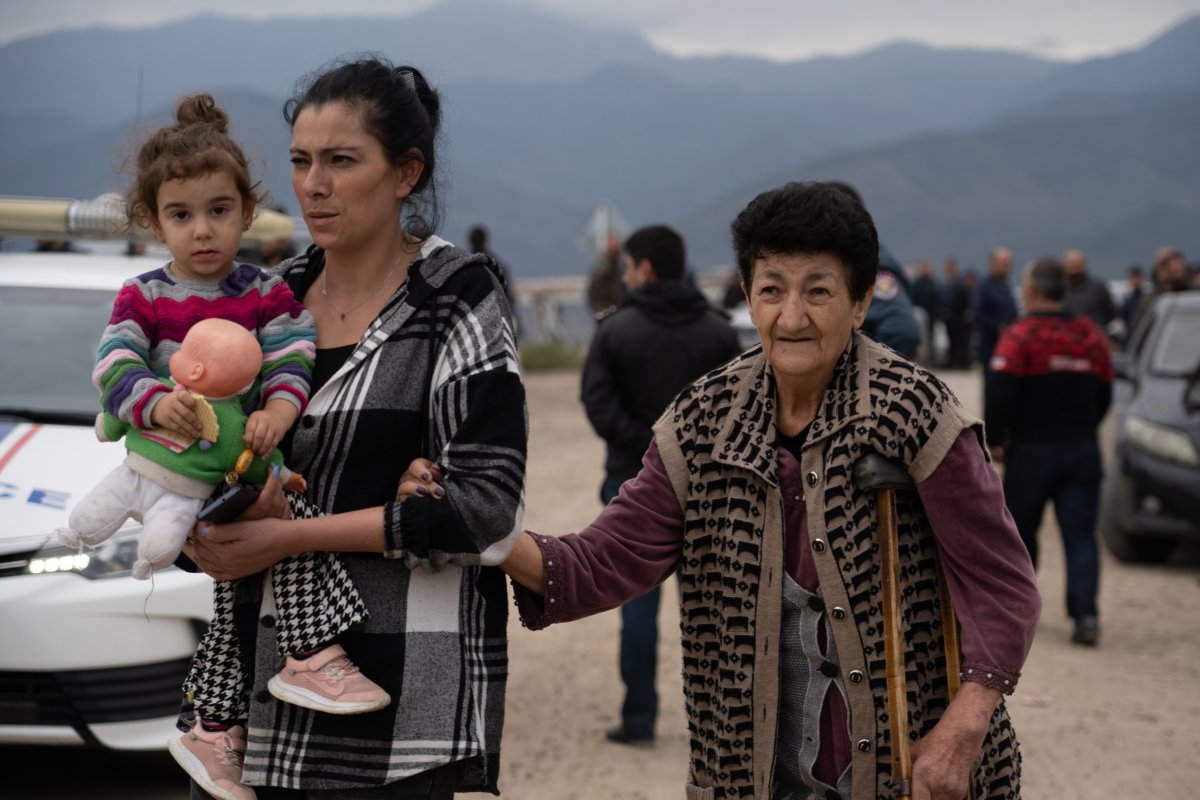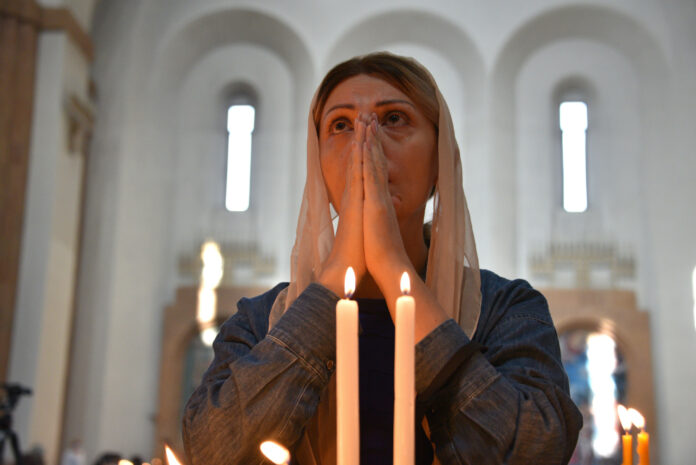For years, Azerbaijan has courted Western journalists, researchers, academics, parliamentarians, and even social media influencers by offering them invitations to participate in “reporting” trips and conferences, a practice known as “caviar diplomacy.” Photos of smiling people in beautiful locations help hide the Azeri regime’s persecution of their own people and to cover up the ethnic cleansing of Armenians and recent aggression against Armenia. The Swedish investigative journalist Rasmus Canbäck has revealed this in several exposés.
Baku’s strategy is paying off. Just months after ethnically cleansing Nagorno-Karabakh, which Armenians call Artsakh, when the Azeri government forced 100,000 Armenians to flee from what was their homeland for a millennia, Azerbaijan has recently attacked several parts of its border with Armenia. Yet, the world remains silent.
Canbäck highlighted how Azerbaijan has avoided the imposition of Western sanctions that have affected rogue states like Russia, Belarus, and Iran. Instead of turning itself into an international pariah, the regime of Ilham Aliyev has attracted increased infrastructure investments from European sources.
Many Armenians I speak to, including experts on geopolitics and other professionals, as well as everyday citizens like my hairdresser, the woman who baked my morning bread, and my second cousin who works in real estate, are all convinced that Baku expects a response from Yerevan for the latest attacks on Armenian ground to be used as an excuse for invasion.
KAREN MINASYAN/AFP via Getty Images
Armenians living on their ancestral lands in Artsakh tried to stay in their homeland, despite Azerbaijan’s starvation tactics—denying them access to food and medicine for 10 months. The once majority Armenian enclave within Azerbaijan’s borders was given as a gift to Azerbaijan by Soviet ruler Joseph Stalin.
When bombs started falling on Armenian children in Artsakh, queuing to get a piece of bread, and no one, not the European Union, nor the U.S., nor the U.N., nor Russia, came to their rescue, they fled. In just a couple of days, 100,000 people fled. I was on the other side of the border when that happened; I met many of them. I heard the most horrifying stories of how ethnic cleansing was used against them.
My charity and human rights organization, ADFA (A Demand For Action), and its sister organization TACF (Transparent Armenia Charitable Foundation), in collaboration with Birthright Armenia, and Smart Armenia distributed food, organized temporary shelters, and did our best to comfort the Armenian children fleeing persecution. I will never forget when my colleague Anush asked if we had enough funds to buy chicken for 42 families sheltered in one of the hotels in Goris, a city where many found refuge. Parents had asked Anush for protein, any kind of protein, since their children hadn’t eaten any for months during the blockade.

Astrig Agopian/Getty Images
Goris, the first city to receive the ethnically displaced Armenians, was a beacon of hope amid despair. We, all the humanitarians that went there to aid the refugees, shed tears silently, always away from the public gaze, not to make the displaced lose even more hope.
During those few days, as we traveled to other Armenian cities along the border, we encountered numerous families, most of whom were stoic, still grappling with the shock of their displacement. Additionally, I had the privilege of meeting young volunteers from various parts of the world, including European countries, Canada, the U.S., Latin America, and the Middle East. They were all part of Birthright and AVC (Armenian Volunteer Corps) and joined us in assisting the refugees. Their compassion and dedication to helping others provided us with energy and strength to continue our work.

Alex McBride/Getty Images
A story that I personally will never forget involved a 13-year-old boy, Gor Khachatrian, who sought refuge with his family. He drove seven people, relatives, and neighbors, all the way to Armenia. With his father away during fighting, Gor told reporters that he was the only one who could save them. The journey took three days. With only some of their clothes, everything else had to be left behind—but they were at least safe.
It’s not the bodies of dead people I’ve seen, and it’s not the wounded that stay with me, it’s stories like Gor’s that fill one’s heart with both sorrow and compassion. While we were giving clothes and food to refugees, a shy 8-year-old boy found a pair of used yellow shoes that fit him perfectly. He smiled as he looked up at his mother while slipping them on. It was a rare moment of joy. I saw my Armenian colleague Haik, visibly moved, quietly leave the room, needing a moment to himself.
What should Haik and others in Armenia think or feel now, six months after the ethnic cleansing of Artsakh? Will Armenia’s military and government respond to the new Azeri attacks and defend them from Azeri aggression, amid a possible invasion?
Nuri Kino is an independent investigative multi-award-winning reporter and minority rights expert.
The views expressed in this article are the writer’s own.
Uncommon Knowledge
Newsweek is committed to challenging conventional wisdom and finding connections in the search for common ground.
Newsweek is committed to challenging conventional wisdom and finding connections in the search for common ground.


